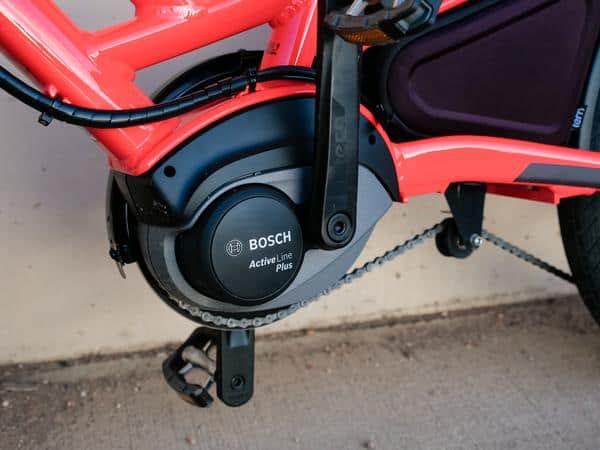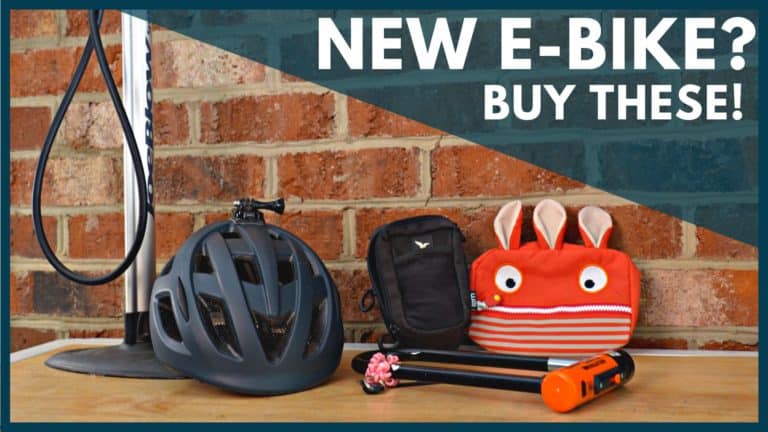Are you looking to learn more about electric bikes? This is a constantly updated guide from an e-bike expert mechanic, rider, owner, and ex-bike shop owner.
Electric biking is a fun and enjoyable way to bike further and faster. Electric bikes have come a long way in the past 5 years but they are still complicated machinery that requires a little more maintenance and have more laws regulating them on where you can ride them. We could go on for hours about electric motors, maintenance, ride quality, and so forth. Please stop in our shop or give us a call if you want to speak in-depth about it! I will continue to add to this article so make sure to ask your questions in the comments.
Table of Contents
What is an Electric Bike?
An electric bike is designed or outfitted aftermarket with an electric motor. This motor can be either in one of your wheels or attached under your cranks. The majority of electric bikes sold by bike stores are electric assist, also called Pedelec in Europe. Electric assist means you must be pedaling and the electric motor gives you assistance to make the pedaling feel easier or you to go faster with the same effort.
Electric Bike Beginners Guide
Types of E-bikes and Classes in the US
- E-Bike Class 1 – pedal assist up to 20 MPH
- E-Bike Class 2 – a throttle provides assistance up to 20 MPH if you are pedaling or not
- E-Bike Class 3 – provides power to 28 MPH and is often called a “Speed” option
Local Electric Bike Laws
Each state, and even local town, can have different e-bike laws about where they can be ridden, what needs to have helmets, and more. People for Bikes have been working tirelessly on electric bike laws and regulations in the United States. They have the most up-to-date resources for local electric bike laws across our country. See their list of e-bike laws.

Electric Bike Maintenance
- Not all electric bikes are created equal. Make sure you are buying from a reputable shop and company that will support your product for years to come. Visit your bike shop for regular service and diagnostics to keep your bike safe.
- Store your e-bike battery out of direct sunlight, in a dry environment with temperatures from 59°F (15°C) to 68°F (20°C) & recharge at room temperature. We recommend taking your battery into your home or work to charge it when possible.
- Remove your battery during transportation. Make sure to cap the connector ports on the frame so they don’t get wet.
Purpose-Built Electric Bike vs Aftermarket E-Bike Kits
It is very easy to see the price of some DIY electric bike kits and wonder if you have what it takes to install one on your bike. Unless you are a great home mechanic, leave this to the professionals but also you should think about if it is the right thing for you and the bike you want to upgrade. ” Are you wondering if you should buy a dedicated electric bike or build your own using an aftermarket e-bike kit on your current bike? Read my opinions on that here.
The Best E-Bike Accessories
Conclusion
It is a great time to get into e-bikes! They remove barriers, and make cycling even more enjoyable because you are able to do it more often, go further, carry more, and ride with people typically faster than you.
What are you waiting for? Go test-ride an electric bike today! Let me know what other questions you have below!




Hello Arleigh,
I love your videos but I have not seen you talk about bags one can get to transport a folded vektron Q9. I want to be able to fold and cover my bike on trains especially living here in Portugal. What bag would you recommend for these times and also to put in car trunks if unable to ride to destination?
You’re are looking for the Stow bag. I do recommend taking out the battery first: https://www.ternbicycles.com/en/accessories/472/stow-bag